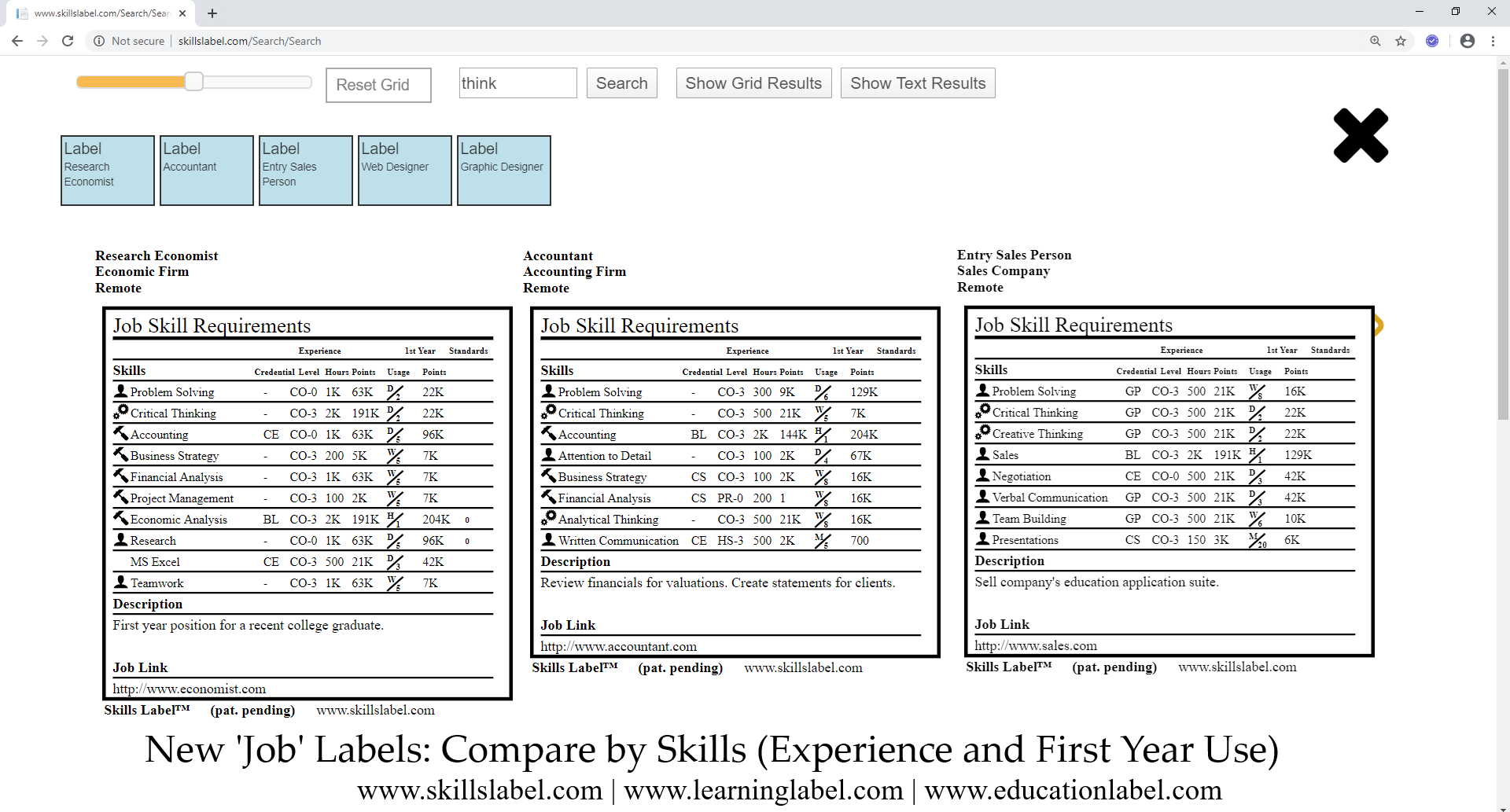Introducing new ‘job’ labels, a standard representation of skills for a job description. Job labels define requirements for prior experience and the first-year application of skills. Like learning labels, jobs labels are an ideal format to make basis of comparison decisions and quickly understand a set of requirements.
Job labels are meant to augment or supplement the well-established, context driven job description – set the standard for how skills are represented. This is how job labels work for different worker segments (with enough job labels in the system):
- Recent college graduate. Help identify top technical skills to work on in the first year; for example, a business graduate, might want to work in sales, economics, or finance. Use job labels to narrow top choices, then learn more by clicking on a link (on the label) to a full job description.
- Recent high school graduate. Focus on what skills are applied in the first year in a job. Find jobs where a graduate possesses or can acquire necessary skills.
- Recent certification. Identify jobs where the certification is relevant.
- Early career professional. Use job labels to make quick decisions on shorter term commitments. An effective platform for workers to find second or freelance jobs in an increasingly project-based economy.
As a standard representation, job labels are in an ideal format to make line-by-line, skill by skill comparisons. There is established familiarity with learning labels, as the job labels are constructed in a similar format. A collection of job labels, which appears after a search, is shown in a smart, responsive dashboard (like the learning labels). This is an ideal interface to drag the labels into different sort orders and toggle between tiles and jobs.
See a basic example:
- Go to the website at http://www.skillslabel.com/Search/Search
- Select ‘Job Labels’ and search on ‘thinking’ (a general term across jobs).
- Double-click on the tile to see the label.
- Drag the tiles into different sort orders.
The goal is to: map learning to skills; map jobs to skills; and combine to make more effective pathways.
